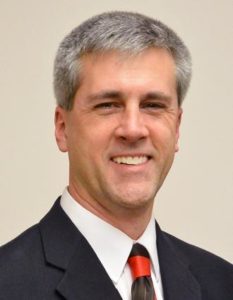Even the most thoroughly developed health and safety program can fall flat without effective training. While on the surface, getting a training program off the ground can seem straightforward, in reality, it’s anything but. Every business has unique contingencies, and, if you don’t take the time to understand and plan for them, any training program will fall flat. Chip Darius, as the founder of Safety Priority, has spent almost 3 decades helping organizations understand their environment, health, and safety (EHS) compliance needs, and then help them build an effective training program tailored to their business. Read on to learn more about Darius’ career path and successes as an EHS consultant!

How did you get your start in the environment, health, and safety (EHS) field?
I learned first aid in Scouting, then progressed through Advanced First Aid, Lifeguard, and EMT training before graduating high school. In my ambulance work I quickly saw that many injuries were preventable and turned my attention to injury prevention and safety. I got started with OSHA compliance helping EMS, fire/rescue and law enforcement agencies comply with the OSHA bloodborne pathogens standard, and steadily expanded my OSHA knowledge and consulting work to a safety consulting career that now spans 29 years. I have also maintained my EMT certification for 40 years.
What is the biggest EHS compliance challenge at your organization, and how have you managed it?
I have worked with over 750 client companies throughout the US and internationally. The biggest challenges they all face seem focused around recognizing and controlling risk—which is a different concept from complying with OSHA. In my training and consulting I help clients clearly understand how OSHA standards are bare minimums, and it’s up to management to provide resources and promote a culture that effectively controls risk.
What do you like the most about your career in EHS?
I like how every day brings different challenges, from regulatory changes to job site assessments to incident analysis. Safety work is diverse and it’s important to keep up on many different topics.
What is the most difficult or frustrating part of your job?
It is frustrating to see repeats of tragic and preventable incidents—like trench cave-ins without protection, and permit-required confined space fatalities. As safety professionals we see the cumulative incidents and we want the collective knowledge of employers to recognize the trends.
What do you see as the main emerging trends, both positive and negative, affecting the future of the EHS profession?
One key emerging trend is going “digital.” That means performing site inspections with electronic checklists on tablets or smart phones, as well as things like pre-operation inspections of forklifts and aerial lifts (MEWPs), job hazard assessments, machine guarding hazard assessments, and other safety evaluations. The dilemma is that electronic checklists very in their completeness and effectiveness, and users may not even realize what they are missing.
What’s your favorite job-related story that you like to tell others?
One candle lights another and loses nothing in the process. I like how I can teach a class full of safety professionals, who go back and teach their safety committee members, who each go out and detect and report hazards, and all of them take the safety message home to their families and friends. The ripple effect of raising safety awareness keeps on going.
Your upcoming presentation at Safety Summit 2020 is about measuring training effectiveness. Could you tell us a little bit about what you’ll be discussing?
Sure. Many OSHA standards require employers to provide safety training to employees. Employers vary widely in how they carry out safety training—from no training, to relying on common sense, to quick verbal instructions, to formal classroom sessions, to hands-on skills work, and more. My session will explore the many different adjectives and requirements that OSHA standards insert into the law: effective training, adequate training, suitable training, demonstration of competence after training, and more. Training is not complete unless there is an appropriate evaluation to ensure the employee has achieved the desired knowledge, skills and attitudes. The point is to help EHS professionals ensure that safety training is effectively delivered, meeting or exceeding legal requirements, with a proper evaluation to ensure that training results in competent performance by employees.
What advice do you have for people just entering the profession?
Business is a series of challenges and solutions. Get into the mix and get your hands and boots dirty. Learn at least as much from the front-lines workers as from textbooks, conferences and professionals. Never stop learning. It’s all about protecting valuable business assets and improving business value, and protecting life is the highest calling.
| Chip Darius is the founder and president of Safety Priority, a safety and risk management consulting company. He has been active in safety and emergency response since 1980 and has been providing specialized OSHA compliance consulting and training since 1991 throughout North America and internationally. Since 2002, Darius has served as an instructor for the OSHA Training Institute Region 1 Education Center (New England) and as an adjunct faculty member at Keene State College. He is an authorized OSHA Outreach trainer for both construction and general industry and has served as a trainer for Associated General Contractors of America. Darius is the vice president for the Connecticut Valley Chapter and an active member of the American Society of Safety Professionals. He is frequently called upon as an expert witness in complex lawsuits involving fatalities and catastrophic injuries. Darius also holds a Master’s degree in Communication Sciences from The University of Connecticut. |

Would you like to be profiled in a future Faces of EHS and share your experiences, challenges, etc.? Or, do you know anyone else in EHS you think has an interesting story to tell? Write us at jscace@blr.com and cdouyard@blr.com and include your name and contact information; be sure to put “Faces of EHS” in the subject line.

